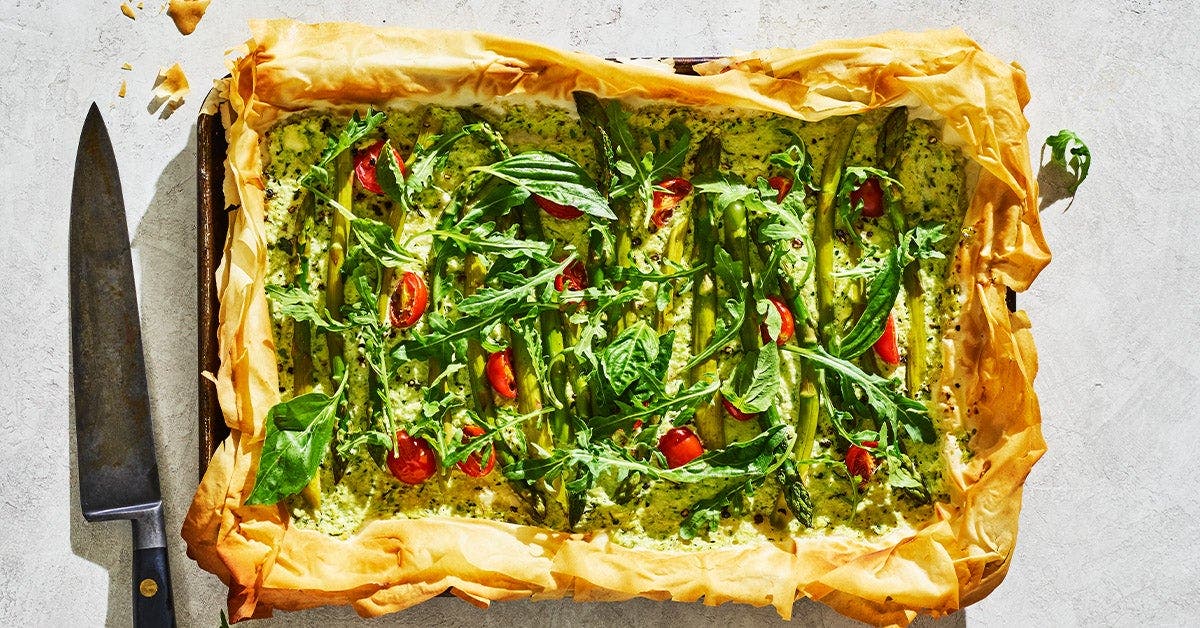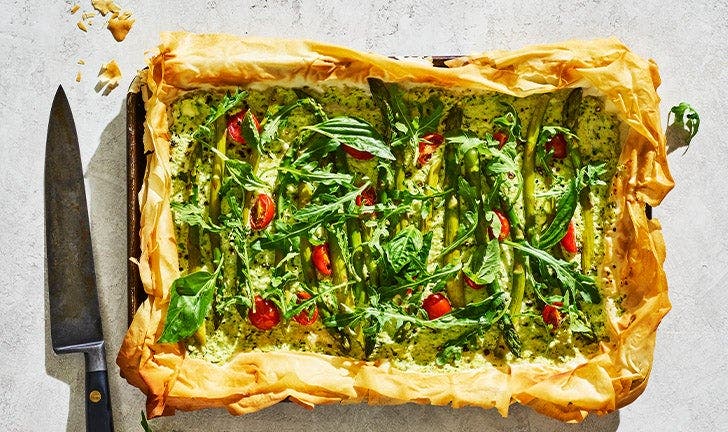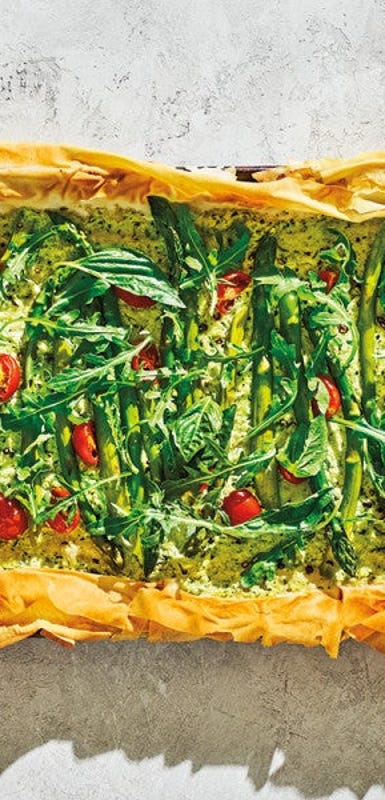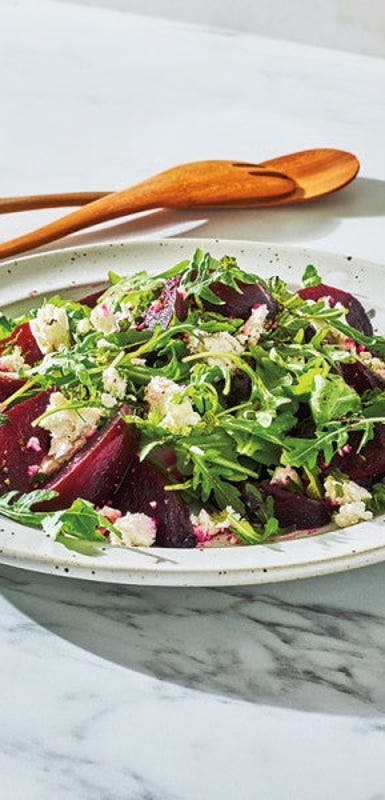How to Eat the Mediterranean Way


May is Mediterranean Diet Month. The Mediterranean Diet is popular for its extensive list of health benefits, particularly heart health. But what does this diet consist of and how do we go about planning our meals around it?
The Mediterranean Diet is not really a “diet”, but rather a way of eating that is influenced by the traditional eating habits of countries that border the Mediterranean Sea, including Italy, Greece, Spain, and France. Mediterranean meals focus primarily on minimally processed, plant-based foods. To help guide meal planning, one can follow the Mediterranean diet pyramid, which indicates that:
All meals should be based around fresh fruit and vegetables; whole grains; legumes, beans, nuts, and seeds; and olive oil as a primary source of fat.
- Fish and seafood should be consumed at least twice per week.
- Eat small to moderate portions daily to weekly of dairy products, cheese, eggs, and poultry.
- Red wine can also be consumed in moderation (1-2 glasses daily).
- At the top of the pyramid, limit red meat, saturated fat, and sweets.
Tips for Mediterranean Cooking
It’s easy to bring the delicious flavours of Mediterranean food into your kitchen. Follow these simple tips when planning and preparing snacks and meals:
Make Vegetables the Focus of Your Meals. Aim to fill half your plate with veggies at each meal. You can also sneak them in throughout the day by crunching on carrot sticks or red peppers before a meal, adding spinach or kale to a smoothie, or topping a sandwich with tomato and cucumber slices.
Enjoy Fruit for Snacks or Dessert. If you have a sweet tooth, satisfy it with a serving of fresh fruit after dinner. Enjoy a mix of berries in a fruit salad, or a pear drizzled with a small amount of honey. You can also pair dried fruit or an apple with almonds for a quick snack while on-the-go.
Choose Whole Grains More Often. Instead of white bread and pasta, switch to whole grain breads and whole grain pasta. You can also experiment with other whole, unprocessed grains, by preparing dishes such as a barley soup, oatmeal for breakfast, and a brown rice or quinoa salad.
Increase Consumption of Legumes and Pulses. Pulses are the dried seeds of the legume plants and are considered plant-based protein sources. They include beans, lentils, peas, and chickpeas and can be used in many Mediterranean vegetarian recipes, in place of animal protein sources.
Cook With Olive Oil. Olive oil is the main source of fat in the Mediterranean diet. It contains heart-healthy monounsaturated fat, which can help lower bad cholesterol levels. Use extra virgin olive oil in place of butter when cooking, or drizzle it on fish, chicken, pasta, or vegetables.
Limit Red Meat. You’ll want to enjoy fish and seafood more often on the Mediterranean diet. Fatty fish such as salmon and mackerel are rich in heart-healthy omega-3 fatty acids that reduce inflammation, but white fish and shellfish are also good options. Instead of beef, pork, and lamb, try grilled fish tacos, a shrimp stir-fry, or a seafood-based soup.
Your Mediterranean Shopping List
Now that you know more about how to cook the Mediterranean way, you’ll need to stock up on some key ingredients. Here is a Mediterranean food list to bring with you to the grocery store:
Fresh or Frozen Fruit. Fruit provides fibre and immune-protective antioxidants, vitamins, and minerals. Stock up on apples, avocadoes, berries, citrus fruits (especially lemons), grapes, melons, pears, stone fruit, and pomegranates.
How much: Enjoy 3 or more servings daily, as a snack or dessert. 1 serving = 1 medium fruit; ½ cup (125 mL) fresh, frozen, or canned fruit with no added salt or sugar; ¼ cup (60 mL) dried fruit.
Vegetables. Vegetables take centre-stage in Mediterranean meals, and you can enjoy them a variety of ways, such as roasted, steamed, or sautéed. Load up on leafy greens (kale, spinach, Swiss chard), tomatoes, cucumber, carrots, onions, eggplant, asparagus, artichokes, beets, bell peppers, broccoli, cabbage, green beans, mushrooms, squash, and zucchini.
How much: Consume 5 or more servings daily. Make at least two servings raw vegetables or salad. 1 serving = 1 medium vegetable; ½ cup (125 mL) fresh, frozen, or canned with no added salt or sugar; 1 cup (250 mL) raw, leafy greens.
Whole Grains. Whole grains provide heart-healthy nutrients such as dietary fibre, B vitamins, magnesium, potassium, and antioxidants. Try whole grain breads and pasta, or stock up on ancient grains including farro, kamut, barley, bulgur, polenta, quinoa, and freekeh.
How much: Consume 5 to 6 servings daily. 1 serving = ½ cup (125 mL) cooked grains, rice, pasta; 1 slice bread; ¾ cup (175 mL) hot cereal.
Legumes. Legumes provide a source of plant-based protein that can be incorporated into many Mediterranean vegetarian recipes. Fill your shopping cart with chickpeas (garbanzo beans), lentils (black, red, or green), beans (black, pinto, and white/cannellini), and peas.
How much: Consume 3 or more servings weekly. 1 serving = ¾ cup (175 mL) cooked dried beans, peas, or lentils.
Fish and Seafood. Fatty fish, crustaceans, and mollusks are chock full of omega-3 fats that support heart health and help to reduce inflammation. Enjoy fish and seafood such as salmon, tuna, sardines, trout, shrimp, scallops, crab, oysters, clams, and mussels.
How much: Consume 2 or more servings weekly. Eat at least one serving per week of fish high in omega-3 fats, such as salmon, mackerel, or trout. 1 serving = 3.5 oz. (100 g) cooked from fresh or frozen, or canned.
Lean Poultry. Choose lean poultry, such as chicken and turkey more often than red meat (beef, pork, lamb, goat). Poultry is enjoyed as part of the Mediterranean diet as a source of protein, but with less emphasis than plant-based foods, fish, and seafood.
How much: Consume less than 2 servings per day. 1 serving = 2.5 oz. (75 g) or ½ cup (175 mL).
Let’s Get Cooking with Mediterranean Recipes
Now that you’ve stocked your shopping cart, you’re ready to start preparing Mediterranean meals at home. The WW cookbook, The Mediterranean Table, is filled with plenty of ideas. Try some of these great Mediterranean vegetarian recipes to get you started:





